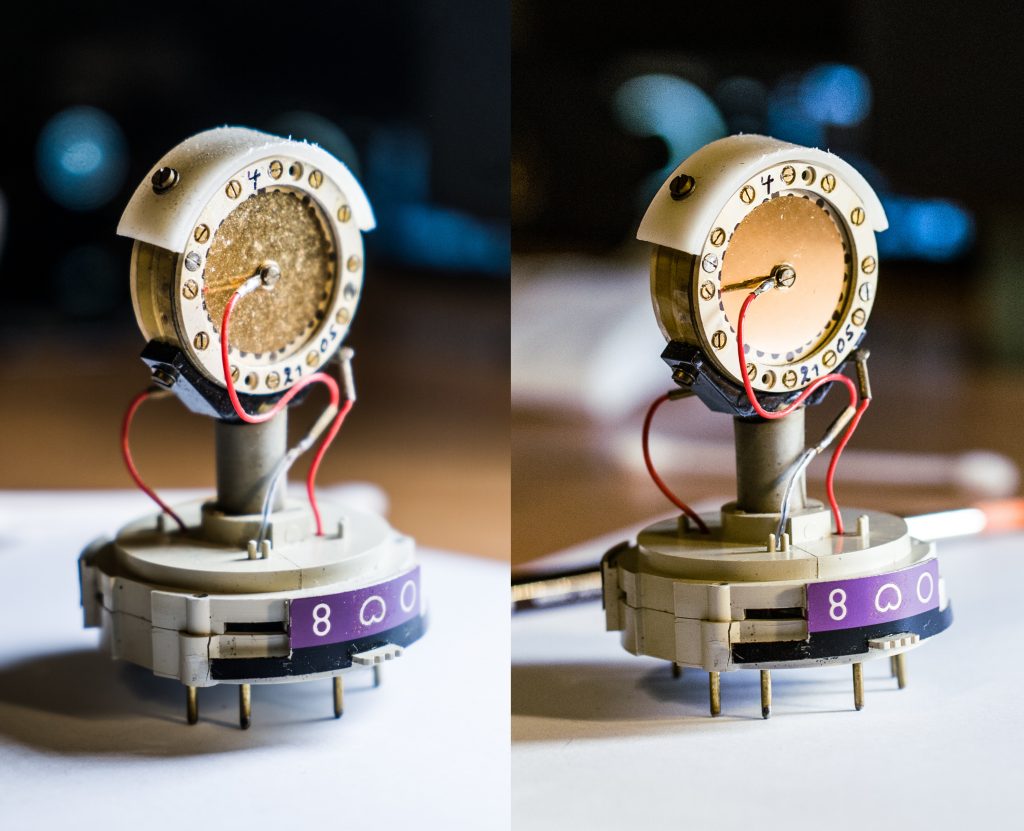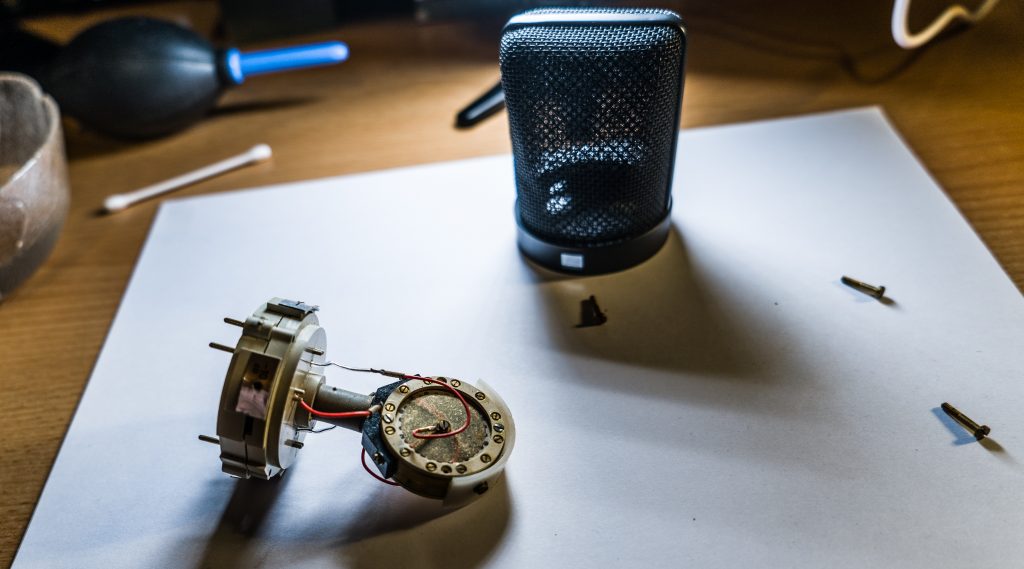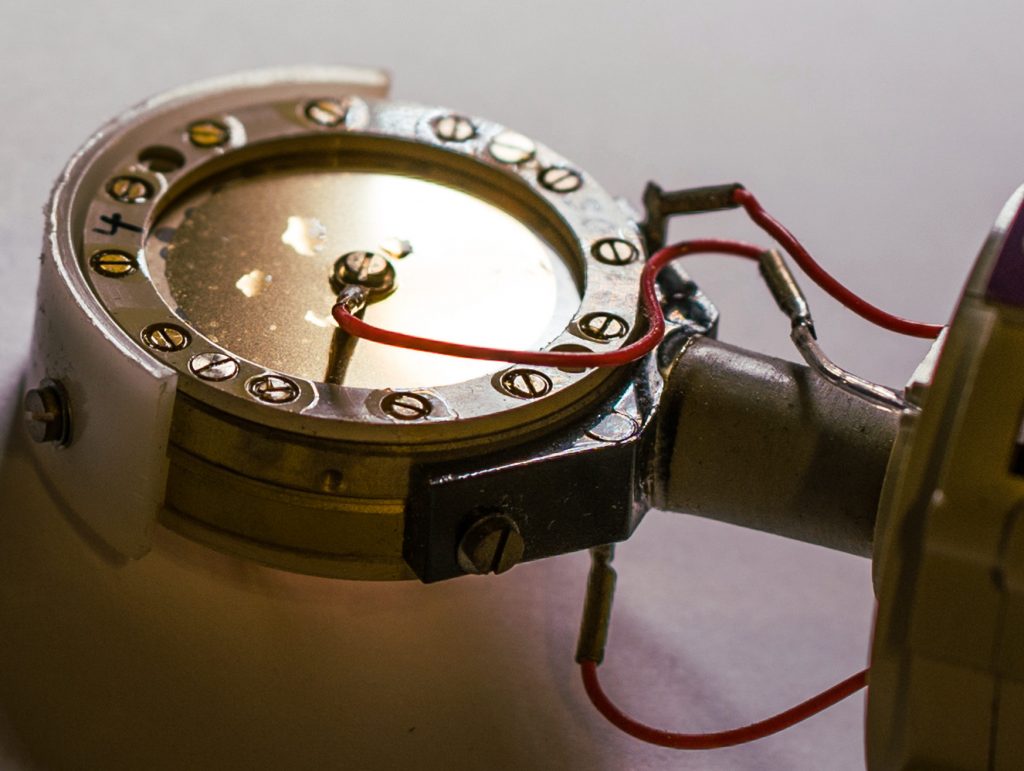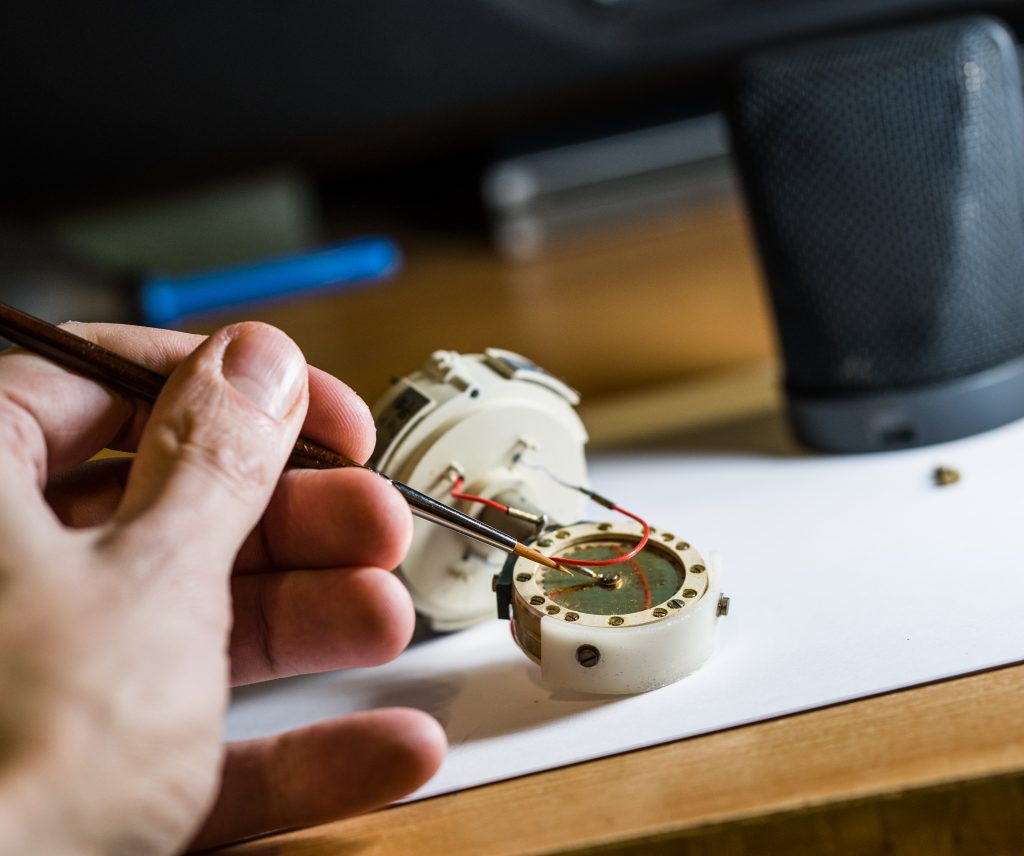If you have an old condenser microphone in your studio or have bought a used one, you might have thought about cleaning the capsule membrane at some point. In reality small amounts of spit or dirt that get on the membrane over time usually don’t impact a microphone’s performance at all. If you consider cleaning your capsule you should first evaluate if the expected improvement in sound is worth the risk of damaging your microphone. Thick layers of gunk on the gold membrane will reduce its conductivity and alter the sound, usually making it darker and less defined. A few dust particles on the other hand, should not be enough to warrant a cleaning process. That being said, I don’t think cleaning a capsule is as hard as some people make it out to be – given you are very careful and use the right tools for the job.

A sane person would never attempt to clean the capsule of a 1980 Neumann U87 at home, instead of having it sent to a professional, right? Good that insane people exist so everybody can learn from their experience.
Before attempting to clean my microphone capsule I did extensive research, only to find different reports of various outcomes. One guy tried to clean his capsule in his YouTube Video – also a Neumann U87 by the way – with a Q-tip. The result was that after a few seconds of rubbing the gold came straight off and left only the mylar membrane behind. According to him however, it still worked great and sounded better than before (duh).
Obviously you need something much softer than a Q-tip, and whose advice to trust, if not the official statement from Neumann themselves on cleaning capsules. Released way back in 1988 it states:
“Every membrane is carefully brushed with a very soft brush with distilled water. The water with the dissolved dirt can then be removed with very soft blotting-Paper. This procedure has to be repeated several times until the capsule is really clean. Those capsules which cannot be cleaned by this method have to be exchanged. Cleaning the membrane by means of solvents is not allowed. These solvents are too thin and fugitive. (…) solvents could also transport dirt below the membrane fixing rinqs. solvents can also cool down the membrane strongly and then humidity can condense below the membrane which cannot be removed from there. Besides that, the use of solvents bears the risk of influencing the mechanical tension of the membrane.”
The official statement by Neumann has since changed by the way, to “in case you microphone capsule needs cleaning, strictly refer to a technical with the necessary expertise and don’t do it yourself.” – What a bummer!
But since my mic is from 1980 I will go with the more timely adequate 1988 instructions and attempt to do it anyway.
I went out and got distilled water – no solvents, and two soft brushes. Using distilled water instead of tap water is important because the calcium in regular water can leave residue behind that even inhibits electrical flow. Furthermore regular water conducts electricity much better and could potentially short circuits in electrical equipment.

First I opened the mic and removed the capsule housing, which didn’t require any tools in this case. Next I had to unscrew 3 small screws on the bottom to remove the grill from the capsule assembly. Don’t touch the connectors of the capsule head assembly, like the 9 small pins in the case of the Neumann. Some of these pins carry high voltage current to the capsule and even tiny amounts of fat from your fingers could cause noise or crackling. I’ve wiped the pins off with some ethyl-alcohol before reassembly to make sure there was no issue.

I would consider the level of dirt on this membrane light to medium given its age, it was clearly visible but I’ve seen much worse. First I started to gently clean the plastic parts of the capsule with q-tips. Once everything but the membrane was clean I went to work by using one of my very soft brushes, barely applying any pressure whatsoever, but rather just applying the water across on the membrane. You can soak up some of the water with a soft blotting paper or simply tissue, just make sure you don’t touch the membrane with it. This process takes patience, because you want to use zero pressure and rather just keep soaking up and applying fresh water so that over time the dirt comes off the membrane and is soaked up with the water. The advantage of using destilled water is that as soon as you have solved and removed all the spit and nasty stuff from your membrance, remaining water drops will evaporate without leaving any trace.
IMPORTANT: Let it be said again, the gold layering on the membrane is VERY sensitive and is not strongly bound to the surface of the membrane at all. Even very light levels of pressure can remove the gold from the membrane, that’s why it is very important to let the water do the work and patiently keep applying water with a soft brush and soaking it up rather than scrubbing the dirt.
Even on my microphone I saw a small spot of ca. half a millimeter where the gold came off the mylar. I think it was a tiny unfortunate movement with the brush that did the damage, but that’s something I can live with and surely won’t alter the mic’s performance.
After the cleaning process the mic should dry up pretty quickly, but give it some time before use to be on the safe side. As you can see in the pictures I was able to remove around 90% of the dirt and didn’t do any noticeable damage.

THE RESULTS: Let me confess straight away, I did not do any A/B testing but rather relied on my memory from a decade of using this mic. The microphone improved ever so slightly in terms of clarity and openness, but retained its dark (or natural) character. I’d say it’s a similar level of improvement you can expect from using different brands of pop filters. To some it might be inaudible, while to others it makes all the difference. If you membrane is much dirtier than this example, the difference will definitely be greater. I’m glad I’ve made the experience of cleaning a capsule and if I had a similar mic, I would surely do it again.


